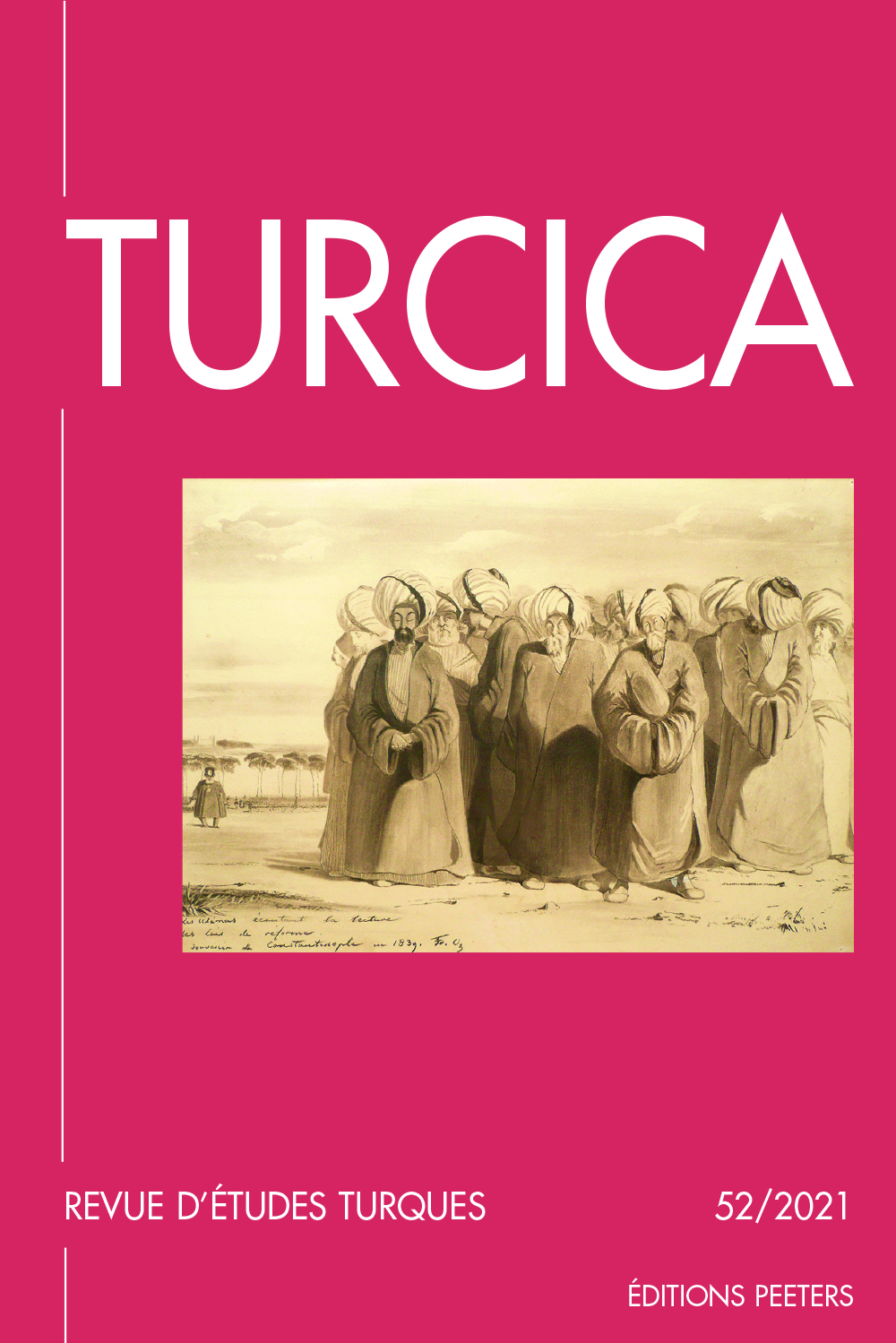 previous article in this issue previous article in this issue | next article in this issue  |

Preview first page |
Document Details : Title: The Making of the Sublime Porte Near the Alay Köşkü and a Tour of a Grand Vizierial Palace at Süleymaniye Author(s): ARTAN, Tülay Journal: Turcica Volume: 43 Date: 2011 Pages: 145-206 DOI: 10.2143/TURC.43.0.2174067 Abstract : This article traces the history of the grand vizierial palaces in the vicinity of the Topkapı palace from the 1630s to the 1730s, often referred to as no more precisely than 'across from' or 'below' the Alay Köşkü. Both the date of the separation of the grand vizier’s household from the sultan’s, and the exact location of these grand vizierial palace(s), remain unexplored. Scholarship has long maintained that the Sublime Porte came into being during Damad Ibrahim Paşa’s tenure in office in the first quarter of the 18th century, but meanwhile the setting up of a permanent office for the grand vizier has been dated to Derviş Mehmed Paşa’s mid-17th-century grand vizierate. There is also the conventional view that the grand vizier residence and household were inserted into the political arena during the term of Köprülü Mehmed Paşa (and his successors) after the 1650s. However, in the light of a waqf document which provides us with a detailed account of the palace in question, it is understood that a monumental late-16th-century grand vizierial palace, built by the grand vizier Siyavuş Paşa (d. 1593) near the Süleymaniye complex, was still in use in the 1650s. Furthermore, the palace in question included the offices of the administrative aides of the grand vizier – a development which has conventionally been taken as indicative of his control of the Imperial Chancery, and has been dated to the early 18th century. On that basis, it is demonstrated that by the mid-17th century, a palace (at a location rather distant from the Topkapı palace) might already have come to be regarded as a permanent residence for grand viziers. Le présent article retrace l’histoire des palais de grand vizir dans les alentours du palais de Topkapı pendant la période allant des années 1630 aux années 1730. Les textes ont souvent situé ces palais de façon aussi vague qu’«en face du» ou «en dessous de l’» Alay Köşkü. Tant la date de séparation entre la maison du grand vizir et celle du sultan que la localisation exacte de ce(s) palais restent inexplorées. Les spécialistes ont longtemps soutenu que la Sublime Porte apparut pendant le mandat de Damad Ibrahim Paşa, dans le premier quart du XVIIIe siècle; cependant l’établissement du bureau permanent du grand vizir a été daté du grand vizirat de Derviş Mehmed Paşa (milieu du XVIIe siècle). Par ailleurs, il est généralement convenu que la résidence et la maison du grand vizir ont pris place dans l’arène politique pendant la période de Köprülü Mehmed Paşa (et de ses successeurs) après les années 1650. Nonobstant, un document de waqf nous rend un compte détaillé du dit palais et nous laisse déduire l’utilisation, encore dans les années 1650, d’un palais de grand vizir monumental, datant de la fin du XVIe siècle, construit par le grand vizir Siyavuş Paşa (d. 1593) près du complexe de la Süleymaniye. De plus, le palais en question abritait les bureaux des collaborateurs administratifs du grand vizir – évolution considérée en règle générale comme indicative de son contrôle de la Chancellerie impériale et datée du début du XVIIIe siècle. Sur cette base, il est démontré qu’au milieu du XVIIe siècle un palais (assez distant du palais de Topkapı) pourrait avoir déjà été considéré comme une résidence permanente des grands vizirs. |
 |


